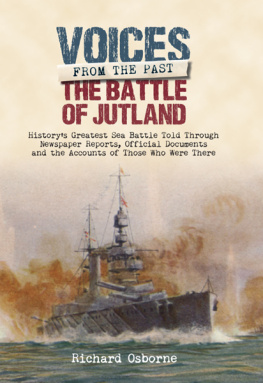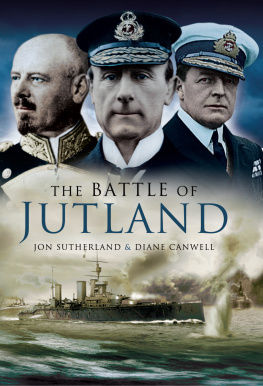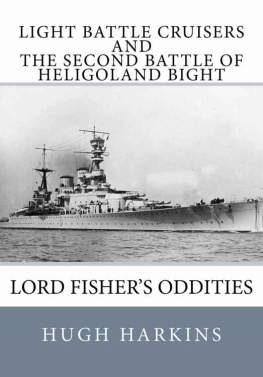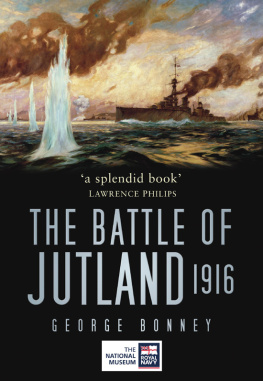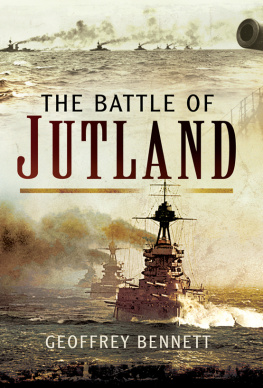THE BRITISH BATTLE FLEET
Its Inception and Growth Throughout the Centuries to the Present Day
VOLUME 1
FRED T. JANE

This 2011 edition published by Barnes & Noble, Inc.
All rights reserved. No part of this publication may be reproduced, stored in a retrieval system, or transmitted, in any form or by any means, electronic, mechanical, photocopying, recording, or otherwise, without prior written permission from the publisher.
Barnes & Noble, Inc.
122 Fifth Avenue
New York, NY 10011
ISBN: 978-1-4114-5606-8
PREFACE
THIS book is not intended to be a "history" of the British Navy in the generally accepted sense of the term. For this reason small space is devoted to various strategical and tactical matters of the past which generally bulk largely in more regular "naval histories"of which a sufficiency already exist.
In such histories primary interest naturally attaches to what the admirals did with the ships provided for them. Here I have sought rather to deal with how the ships came to be provided, and how they were developed from the crude warships of the past to the intricate and complicated machines of today; and the strictly "history" part of the book is compressed with that idea principally in view. The "live end" of naval construction is necessarily that which directly or indirectly concerns the ships of our own time. The warships of the past are of special interest in so far as they were steps to the warships of today; but, outside that, practical interest seems confined to what led to these "steps" being what they were.
Thus regarded, Trafalgar becomes of somewhat secondary interest as regards the tremendous strategical questions involved, but of profound importance by reason of the side-issue that the Victory's forward bulkhead was so slightly built that she sustained an immense number of casualties which would never have occurred had she been designed for the particular purpose that Nelson used her for at Trafalgar. The tactics of Trafalgar have merely a literary and sentimental interest now, and even the strategies which led to the battle are probably of little utility to the strategists of our own times. But the Victory's thin forward bulkhead profoundly affected, and to some extent still affects, modern British naval construction. Trafalgar, of course, sanctified for many a year "end-on approach," and so eventually concentrated special attention on bulkheads. But previous to Trafalgar, the return of the Victory after it for refit, and Seppings' inspection of her, the subject of end-on protection had been ignored. The cogitations of Seppings helped to make what would have very much influenced history had any similar battle occurred in the years that followed his constructional innovations.
Again, at an earlier period much naval history turned upon the ventilation of bilges. Improvements in this respect (devised by men never heard of today) enabled British ships to keep the seas without their crews being totally disabled by diseases which often overmastered their foes. The skill of the admirals, the courage of the crews, both form more exciting reading. Yet there is every indication to prove that this commonplace matter of bilges was the secret of victory more than once!
Coming back to more recent times, the loss of the Vanguard, which cost no lives, involved greater subsequent constructional problems than did the infinitely more terrible loss of the Captain a few years before. Who shall say on how many seeming constructional failures of the past, successes of the yet unborn future may not rest?
A number of other things might be cited, but these suffice to indicate the particular perspective of this book, and to show why, if regarded as an orthodox "history" of the British Navy, it is occasionally in seemingly distorted perspective.
To say that in the scheme of this book the ship-builder is put in the limelight instead of the ship-user, would in no way be precisely correct, though as a vague generalisation it may serve well enough. In exact fact each, of course, is and ever has been dependent on the other. Nelson himself was curtailed by the limitations of the tools provided for him. Had he had the same problems one or two hundred years before he would have been still more limited. Had he had them fifty or a hundred years laterwho shall say?
With Seppings' improvements, Trafalgar would have been a well-nigh bloodless victory for the British Fleet. It took Trafalgar, however, to inspire and teach Seppings. Of every great sea-fight something of the same kind may be said. The lead had to be given.
Yet those who best laboured to remove the worst disabilities of "the means" of Blake, contributed in that measure to Nelson's successes years and years later on. Their efforts may surely be deemed worthy of record, for all that between the unknown designer of the Great Harry in the sixteenth century and the designers of Super-Dreadnoughts of today there may have been lapses and defects in details. There was never a lapse on account of which the user was unable to defeat any hostile user with whom he came into conflict. The "means" provided served. The creators of warships consistently improved their creations: but they were not improved without care and thought on the part of those who produced them.
To those who provided the means and to the rank and file it fell that many an admiral was able to do what he did. These admirals "made history." But ever there were "those others" who made that "history making" possible, and who so made it also.
In dealing with the warships of other eras, I have been fortunate in securing the cooperation of Mr. W. L. Wyllie, R.A., who has translated into vivid pictorial obviousness a number of details which old prints of an architectural nature entirely fail to convey. With a view to uniformity, this scheme, though reinforced by diagrams and photographs, has been carried right into our own times.
Some things which I might have written I have on that account left unrecorded. There are some things that cold print and the English language cannot describe. These things must be sought for in Mr. Wyllie's pictures.
In conclusion, I would leave the dedication page to explain the rest of what I have striven for in this book.
F. T. J.
PREFACE TO NEW EDITION
THIS book was originally written three years ago. Since it was first published the greatest war ever known has broken out. To meet that circumstance this particular edition has been revised and brought to date in order to present to the reader the exact state of our Navy when the fighting began.
Modern naval warfare differs much from the warfare of the past; at any rate from the warfare of the Nelson era. But if men and matriel have altered, the general principles of naval war have remained unchanged. Indeed, there is some reason to believe that the wheel of fortune has brought us back to some similitude of those early days when to kill the enemy was the sole idea that obtained, when there were no "rules of civilised war," when it was simply kill and go on killing.
To these principles Germany has reverted. The early history of the British Navy indicates that we were able to render a good account of ourselves under such conditions. For that matter we made our Navy under such training. It is hard to imagine that by adopting old time methods the Germans will take from us the Sea Empire which we thus earned in the past.
18th June 1915.
F. T. J.
PLANS, DIAGRAMS, ETC.
I
THE BIRTH OF BRITISH NAVAL POWER
THE birth of British naval power is involved in considerable obscurity and a good deal of legend. The Phnicians and the Romans have both been credited with introducing nautical ideas to these islands, but of the Phnicians there is nothing but legend so far as any "British Navy" is concerned. That the Phnicians voyaged here we know well enough, and a "British fleet" of the B.C. era




